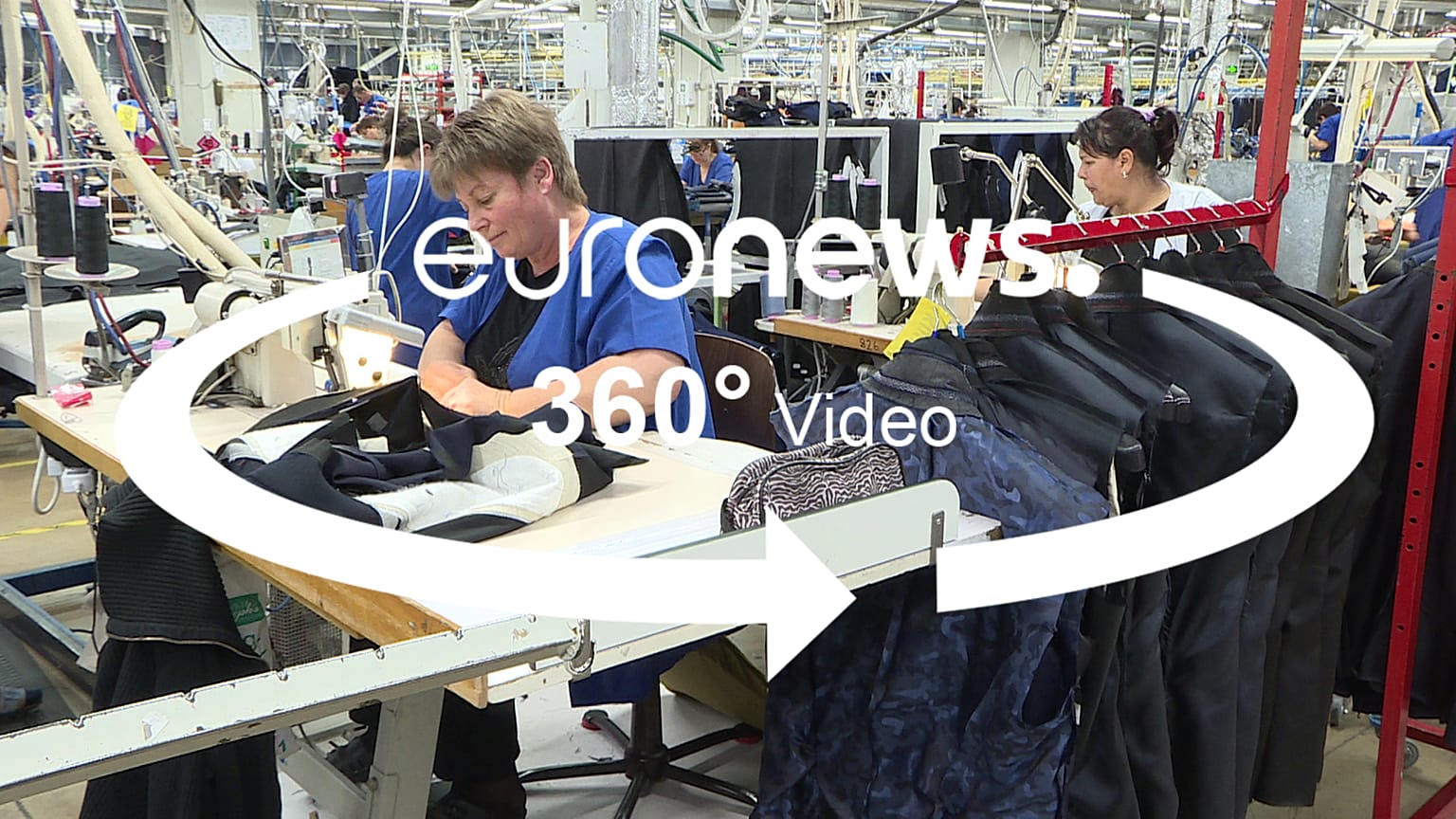In this 360 interactive, you can explore one of Europe's largest garment factories. One million garments are produced here every year, even as many workers migrate to Western Europe to get better salaries.
Start the interactive 360-degree experience by clicking the image above. Don't forget to turn the sound on.
If you are watching on a computer, you can enter full-screen mode by clicking on the binoculars and drag yourself around using your computer mouse.
If you are watching on a smartphone, move the smartphone around or use your fingers.
In this 360-degree interactive experience, you can see inside the Pirin-Tex clothing factory in Bulgaria.
In this 23,000 square metre factory, one of Europe's largest, 1,800 workers produce suits for labels including Hugo Boss – earning €335 per month.
Over the last three years, the workforce at the Pirin-Tex factory has been halved as workers move to Western Europe, where wages are far higher.
At the same time, the owner of the Pirin-Tex factory, Bertram Rollmann, is being economically squeezed by competitors based in places such as Bangladesh.
He is facing the classic dilemma of the well-intentioned capitalist – how can you invest in good working conditions and fair salaries if your competitors' lower wage costs allow them to sell the product cheaper?
Click the image at the beginning of the article to start the 360-degree experience. If the story doesn't load, click here: https://app.getfader.com/projects/492923cd-5699-4cea-a266-da0fe6bf7929/publish














